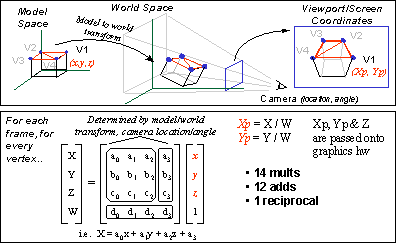The Big Question - Is SSE really MMX2?
Intel had a lot of proving to do with the Pentium III's 70 Streaming SIMD Extensions (SSE), and among the tests they had to pass, proving that SSE wasn't just another MMX was one of them. At a first glance, it's easy to say that SSE would be another flop just like MMX, however if you look a little deeper into the two technologies you'll begin to notice quite a few differences.
The name Streaming SIMD Extensions is indication in its own of the power of SSE, as we all remember from the introduction of the K6-2, SIMD is an extremely popular and powerful feature of the 3DNow! instructions. SIMD, or Single Instruction Multiple Data (in this case SIMD-FP as it applies to FPU instructions, whereas MMX offered SIMD-Int for Integer instructions) allows a single command (or instruction) to be applied to multiple sets of data simultaneously. The key to understanding the benefits of SIMD-FP instructions is the emphasis on the simultaneous execution of commonly used instructions such as multiplies, divides, and adds. The perfect example would be in the transfer of a simple cube in mathematical space to a 3D world as is illustrated by the diagram provided by Intel below:

Copyright 1999 Intel
Corporation
The 14 mults, 12 adds and 1 reciprocal function of the above transfer from model space to world space (mathematical space to 3D world space) could benefit greatly from the Pentium III's SSE as you're essentially executing the same instruction and applying it to multiple forms of data over and over again. The nature of SIMD-FP instructions allows for these instructions to be applied to multiple data structures processed by the CPU in a more timely manner, offering an actual improvement in performance.
While MMX did essentially the same thing for Integer values (whole numbers, i.e. 1, 2, 3…), most complex software such as 3D games, 3D rendering programs, image editing software, and even speech recognition software make use of Floating Point values (numbers with decimals, i.e. 0.0001), therefore there was a very tiny real-world performance improvement that Intel's MMX instructions brought to the table. At the same time, since floating point calculations already take an incredible amount of time to process, even on today's fastest x86 processors (relatively speaking, from the point of view of the CPU not the user); therefore, the application of SIMD to floating point operations as provided for by the Pentium III's SSE offers a greater tangible performance improvement than the application of SIMD to integer operations which are already quite fast on x86 systems.
A disadvantage Intel has with the introduction of the Pentium III's SSE instructions is that AMD's 3DNow! has already had quite a bit of time to build momentum and support within the industry, whereas SSE is just now making its first introduction. The software support for SSE at the launch of the Pentium III seems to be quite disappointing, however in the future, you can expect such titles as id Software's Quake 3 Arena to take advantage of SSE as well as 3DNow! with initial reports illustrating a bare minimum of a 5 - 10% increase in performance with SSE enabled under Quake 3 Arena using minimal optimization of the extensions.
Intel's goal for SSE is not the same as their goal for MMX was back in 1997, instead of advertising the Pentium III's 70 Streaming SIMD Extensions, which virtually any CPU manufacturer (if history chooses to repeat itself) could eventually license from Intel, the microprocessor giant decided to push the Pentium III name which only Intel will hold the rights to. It is because of this attempt that veering the market in the direction of the Intel Pentium III alone that you'll see manufacturers releasing processors that follow the same nomenclature, isn't it funny that the K6-3 has been renamed to the K6-III? At the same time, you'll notice that the cute MMX logo on the Intel Pentium and Intel Pentium II Inside stickers is mysteriously absent, as it has been for a few months now. It looks like everyone's trying to forget about the days of MMX. Don't you all just love the marketing/politics involved in the CPU industry?
So in answer to the question is SSE really MMX2? Yes and no. Yes in that the software support for SSE at the Pentium III's launch will be limited, but no in that SSE actually offers a more visible and tangible performance improvement over MMX, which did little more than inspire a series of repetitive commercials staring Intel's now retired "Bunny People."










0 Comments
View All Comments